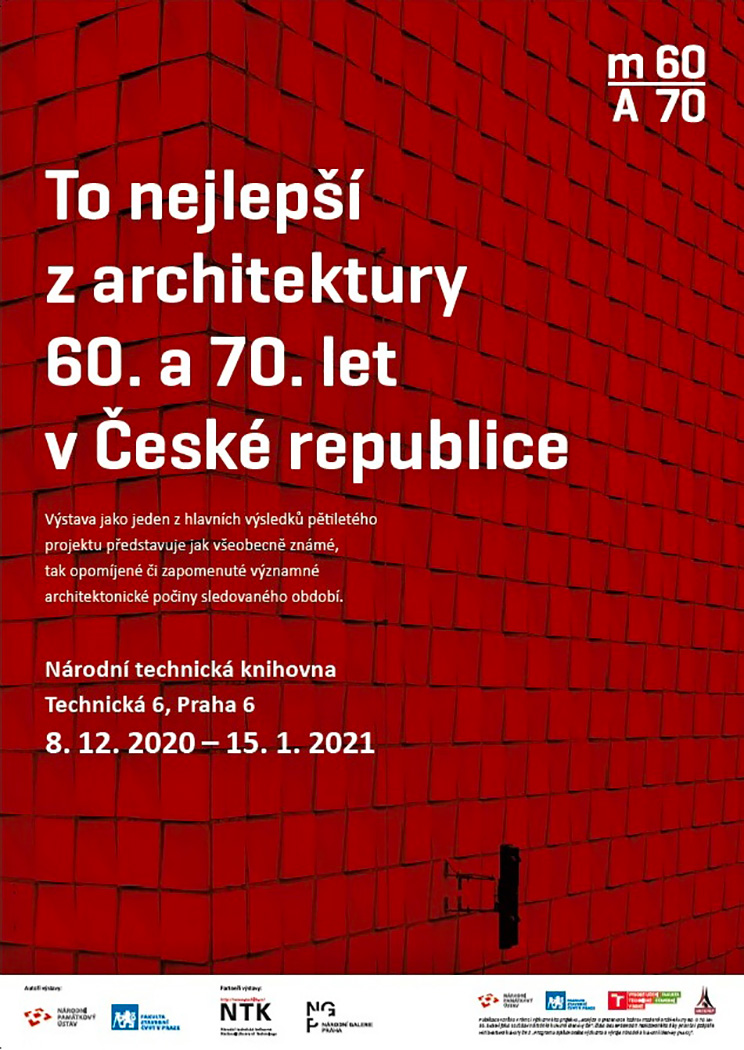
The Best of 1960s and 1970s Architecture in the Czech Republic
Exhibition term:
12. 10. 2020-15. 1. 2021
Where:
Galerie NTK

About the exhibition:"The Best of 1960s and 1970s Architecture in the Czech Republic" is an exhibition resulting from a long-term project of the National Heritage Institute focusing on the values of modern architecture of the 1960s and 1970s as part of the national and cultural identity of the Czech Republic. It captures the beauty and uniqueness of both well-known and neglected or forgotten creative works of the time. A distance of more than fifty years from the creation of these works provided adequate space and sufficient oversight not only to professionally assess and record their values, but also to justify why they should remain a part of our urban or open landscape and why some of them should be institutionally protected. The formal changes in post-war architecture are globally based on the search for style and on the development of materials and construction technologies. These formal changes are linked to political changes in the Eastern bloc countries. The buildings and their sets created in the 1960s and 1970s represent an important phase in the history of Czech architecture, when – after a period of post-war stabilisation and the adoption of Soviet models with their 'historicising' forms in the 1950s – there was a temporary political relief and a significant boom in architectural creation searching for its form and reflecting international trends. Architecture and constructions became a showcase for socialism representing the latest trends and possibilities through their variety of materials, structures and shapes in many cases. The purpose of the project and exhibition is to show that even this architecture, often simplistically referred to as ideological, often presents high formal, architectural and material values, and that efforts to preserve these values for future generations as evidence of tangible and cultural witness of the times are meaningful and justified. The current often unsightly state of buildings from this period is mainly caused by the absence of regular maintenance and in many cases by insensitive utilitarian modifications.

